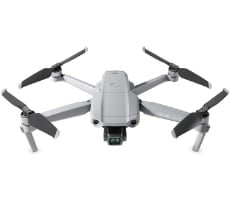Corsair Vengeance K60/M60 and K90/M90 Input Devices
However, the K90 has several additional features that plenty of gamers will no doubt sell them on it over the K60. (Again, though, it likely depends on your preferred type of gaming.)
|
| Keys: Tuned silicon dome keyswitches: Extra keys: Backlighting: Multimedia Keys: USB: Cable: Windows Lock Key: Warranty: Price: |
Cherry MX Red mechanical switches 45g actuation force 2mm to actuation and 4mm to bottom Rated for 50 million operations Gold contacts F1 through F12, Esc, PrtScn, Scroll Lock, Pause/Break, Insert, Home, Page Up Page Down, Delete, and End Three banks of eighteen G Macro Keys with Macro Record and Bank Select hot keys 36Kb of onboard memory for storing up to three sets of eighteen G keys On-the-fly, macro recording Four illumination levels (off, 66%, 75%, and full illumination) Stop, Previous, Play/Pause, Next, Mute, solid metal weighted volume roller USB 2.0/1.1 pass-through connector USB Connector with gold plated contacts 2m non-tangle cable Yes 2 years $129.99 |
The most striking (though least important) difference is cosmetic: the K90 has a full backlit keyboard. We hope you like blue, because that’s the color you’re going to get. The lighting is simple enough to control--there’s a dedicated toggle button next to the Windows lock button that gives you four settings: off, 66%, 75%, and 100% brightness--and the blue glow against the brushed metal looks great.
The keys themselves have a softer, rubberized finish, as opposed to the more conventional hard, glossy plastic finish on the K60’s keys. The sensation actually takes a bit of getting used to, but after a while all you notice is that the keys feel good under your fingertips.
It’s also worth noting that the K90 doesn’t have the replacement keys the K60 has, nor the palm rest. However, the K90 has a removable wrist pad that stretches the length of the unit, and we found that we would much rather have it snapped on than not, whether we were gaming or typing.
One complaint we had, though, was that although the clickety-clack of the mechanical keys is kind of enjoyable, there was another noise--a metallic, springy sound--that we noticed after using both the K60 and K90 for several hours. It’s a low enough noise that you won’t notice it while gaming, but without any music (or screaming, machine gun fire, explosions, or whatever the case may be) to distract your ears, it might bug you after a while. (Full disclosure: It definitely started bugging us after a while.) This phenomona is known as "pinging" and affects many boards that use Cherry MX switches.
The primary feature the K90 has over the K60 is programmable keys--lots and lots and lots of programmable keys. Corsair tacked on an entire 18-key bank of them (labelled G1 through G18) to the left side of the keyboard, extending the device another couple of inches.
The extra keys are your playground for creating macros. Of course, you can configure whatever you want through Corsair’s software, but you might as well take advantage of the K90’s built-in on-the-fly macro recording capabilities. Indeed, the keyboard itself has a small amount of onboard flash memory, so you can take your customizations with you no matter what PC you’re using.


The bank itself was designed well; it’s broken up into 3 groups of 6 keys each (2x3) with a slight gap in between each group so you can easily keep track of where your fingers are without tearing your eyes from the screen. The whole bank is set off nicely from the main keyboard area; it’s much lower, so you aren’t likely to engage one of your macros by accident, and they’re completely out of the way when you’re just typing for purposes other than gaming.






